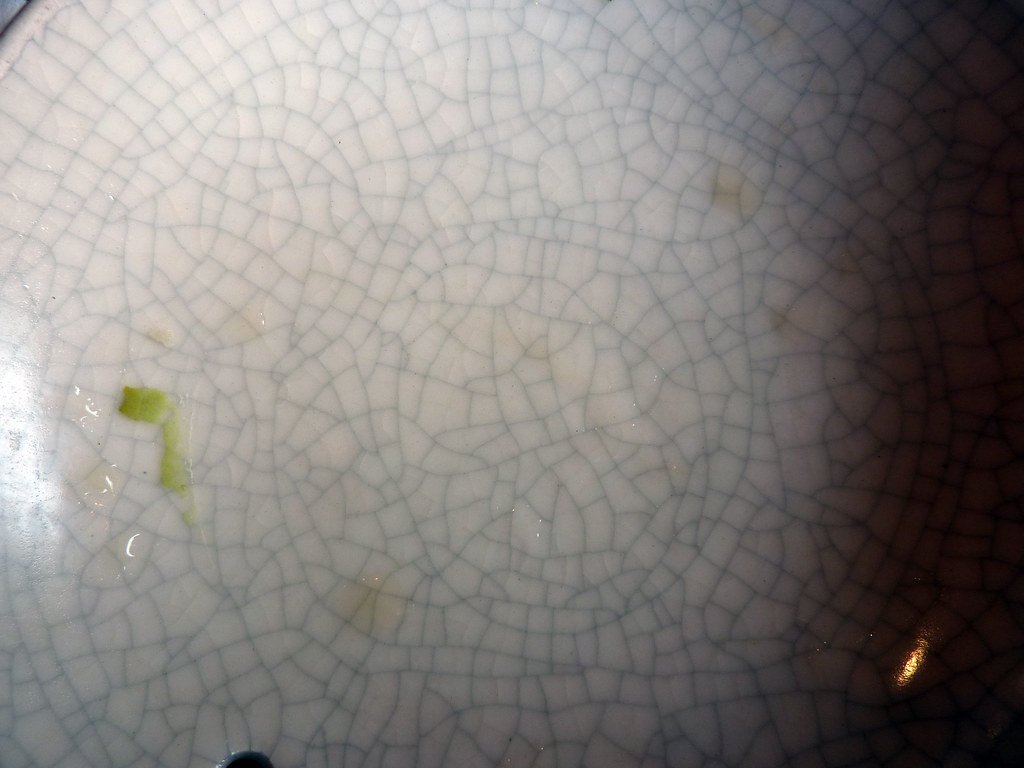Are Dishes With Crazing Safe to Use? (Important Facts)
Making ceramic items is a creative and fun job. The problem may be that the clay must be baked to obtain an object that is strong and usable enough. In previous posts on this site, we have already mentioned the process of baking different types of clay, as well as different types of ovens that bake clay at lower and higher temperatures. In this baking process, different processes can occur, which is a justified question: Are Dishes With Crazing Safe to Use?
Although at first glance it does not seem attractive to form a network of cracks that appear on the surface of baking dishes, it is important to mention that this tension between the ceramic body and the eye is not dangerous! It represents a defect in the glaze and can weaken the dish or pottery.
In this text, I plan to suggest several procedures that can prevent crazing of the glaze, in order to prevent harbor bacteria and weakening of the items, but also suggest other ways to use ceramics that you use in your home.
What Causes Crazing in Ceramics?
In the process of glazing ceramics, there are several steps that must be followed in order to achieve the best effect.
- First of all, if you have the conditions to use a kiln, it is possible to coat your ceramics with a layer of glaze, which melts during the baking process at temperatures from 1100 to 1180 degrees Celsius, and then cools down by cooling. After that, you get a smooth shiny look of your ceramics.
- The process of glazing with a brush can be somewhat more demanding in the work because the brush crosses a small area and must be applied evenly, layer by layer. However, on the other hand, you can use more colors with a brush, scribble on your ceramic dishes, and your creativity and imagination have no limit if you use this glazing technique.
The risk with this glazing method, which leads to cracking of the surface layer, is the uneven thickness of the glaze layers or the air that is retained between the layers.
- By the process of dipping the dish into the glaze, you can achieve the same appearance as glazing ceramic dishes. However, such a dish must be turned upside down when dipping, so after removing it from the glaze, it must drain well and dry before baking. This exposes the edges of the ceramic dishes, as a larger amount of glaze may be retained, which will melt during baking and then shrink during cooling and be subject to cracking and breaking.
Working with ceramics provides a lot of enjoyment and opportunities to express yourself creatively. At the same time, it takes a lot of experience and trial and error before you get a piece of glazed ceramic that you are happy with. On our portal, you have several suggestions on ways you can successfully glaze your clay and ceramic dishes.
Are Crazed Ceramics Safe?
If the surface layer cracks on the ceramic dishes you are making, crazing is considered “a glaze defect” because the container can be significantly weaker than one that is not damaged by the surface layer cracking.
The cracking lines of the surface layer can keep bacteria and germs, which is why it is important that your vessels are free of cracks.
As a result, cracked glaze on clay and ceramic pots are harmful to end-users, as it is porous and permeable to metals that can enter food and drink.
Cracking the surface layer of the glaze on your dishes can reduce the value of the piece, depending on the severity and rarity of the piece.

How do I Stop My Glaze From Crazing?
If you are at the beginning of the path of making ceramic dishes and you persistently find that the glaze you apply cracks, creates cracks and your dishes do not look as great as you imagined – do not despair. The process of working with clay gives pleasure, gives free rein to your imagination and creativity, but also causes serious dilemmas in you. It may seem hard and time-consuming, but the earth you shape in your fingers is grateful, because it gives you the opportunity to make everything you imagined out of it.
In its composition, clay is the surface layer of the earth, and it is the healthiest option for making dishes and consequently – cooking and preparing the most delicious dishes. However, you must work with it carefully, because the final product that ends up in the oven or on your family table must be completely correct and safe.
We write this for a simple reason: some types of clay pots, such as Terracotta, cannot retain liquid and food ingredients. Glazing is not even recommended because it can further affect the quality and appearance of the dish.
We must emphasize again that no matter how harmful, cracking the surface layer of the glaze of the dishes can give great opportunities for creativity, creating amazing patterns that look fantastic!
How Do You Fix Ceramics Crazing?
To offer an answer on how to fix cracked glaze on ceramic pots, we must first offer a way to prevent that cracking. There are several ways to prevent cracking of the glaze on the ceramic surface. You must be aware that a change in even one ingredient of the material can affect the appearance of the glaze, which can lead to a high gloss or matte surface layer.
- In any case, the first recommendation is to add flint or quartz to the clay, in a ratio of 1.25: 1 silica vs clay. This ingredient is added to achieve a greater degree of elasticity and less chance of cracking. As for the quality, it does not affect the appearance and possibilities of working with clay.
The application of this mixture of ingredients can be checked, although many authors recommend that it be done on a larger surface since the vessels we rotate on the point do not show precisely. Therefore, our recommendation is to check this mixture on a larger bowl or tray.
Also, the layer in which you apply the glaze can affect the cracking of the surface layer. However, if you add the glaze in a thin layer that you apply with a brush with the addition of water, cracking can be prevented.

For a special effect on the surface of your ceramic dishes, if you really want a pattern on the surface created by cracking the glaze, apply the glaze, reduce silica and clay and apply it in a thicker layer.
- Another way to prevent the glaze from cracking is to add low-expansion ingredients such as talcum powder, which is in its composition magnesium silicate. In this way, both magnesium oxide and silicon have a lower expansion and prevent the surface layer from cracking during drying and cooling, so there will be no crazing.
- One way to add 5% talc or zinc oxide to the composition of the material you are working with. What is a justified risk from experience, there is a possibility to change the color of the glaze to chrome green or chrome pink glaze.
- Another way to prevent the glaze from cracking on the surface of ceramic dishes is to increase the temperature in the kiln. If you bake at lower temperatures, long and slow, you put the dishes at risk of the glaze starting to crack. This way, by shorter and faster baking at higher temperatures, you can prevent the process of cracking the glaze or crazing.
We hope that the tips we have written in this text have helped you understand what can prevent the surface of the glaze from cracking on your ceramic dishes. If this process occurs, you risk retaining air, bacteria, and viruses in the cracks that can be transmitted to food and drink. Thus, dishes become dangerous for end-users, and the use of these is not recommended for serving food and drinks.
On the other hand, we have to admit that we have a guilty conscience because the patterns created by cracking the glaze on the surface of the dishes can be better than anything that a human hand makes. Carefully choose the pieces you will make, let your imagination run wild, and enjoy the creativity that working with clay brings. For all the tips and recommendations, you can check out other blog posts on our website.







